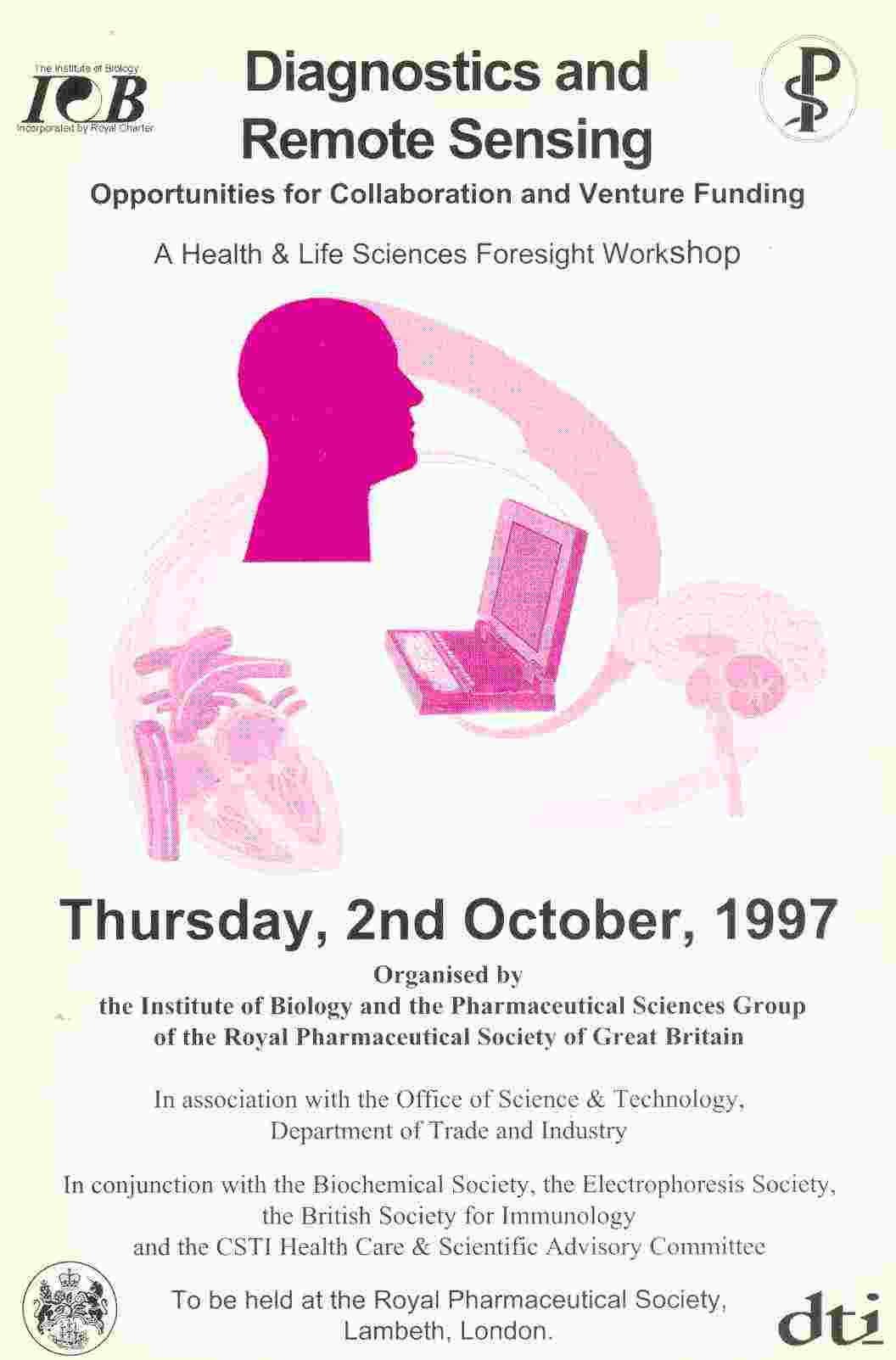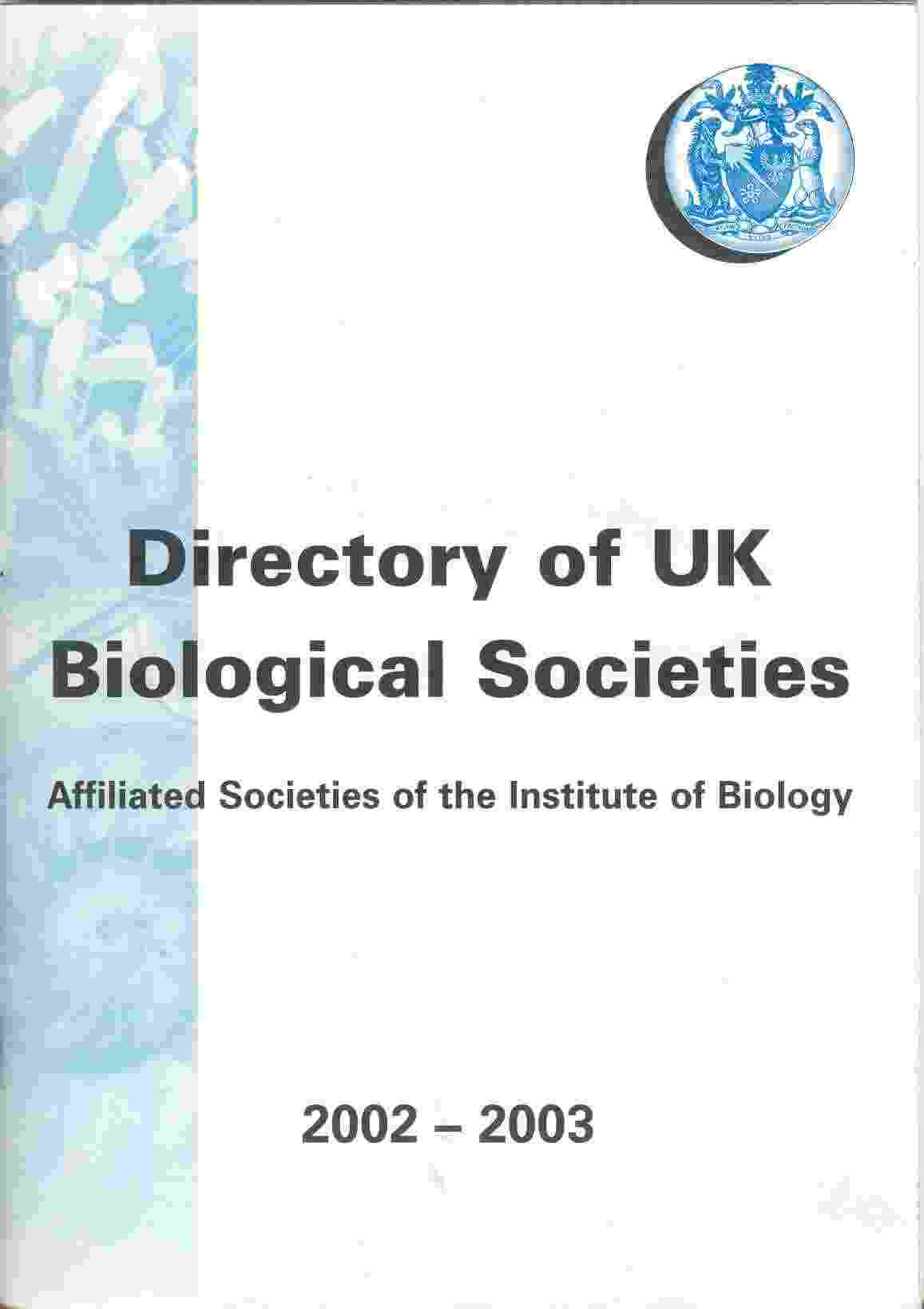|
Becoming Head of Science Policy and Books (previously having been Head of Publications) at the Institute of Biology necessitated a major expansion of the Institute's policy work. Up to the early 1990s the Institute's three divisions, or sector committees (covering agricultural, biomedical and environmental biology), led on policy matters. Just prior to taking on this work the Institute had created a learned society affiliation scheme so that highly specialist biological bodies (relating to the spectrum of biosciences: biochemistry, freshwater biology, microbiology botany, ecology and so forth) could interact and present an united front on issues of common concern. From initially some 30 subscribing bodies to just over 70 Affiliated Societies by 2003 (a record number never since closely matched let alone beaten through to the Institute's dissolution in 2010). This biological affiliation had considerable potential but (for better or worse) accrued this success after the formation of the rival Bioscience's Federation's precursor UKLSC.
The Institute of Biology had – as charged by its Royal Charter – for decades responded to policy consultations from Government and its Departments as well as their respective agencies. The mid-1990s saw a decided ramping up of such responses and over 120 were made during this period alone. In the final few years of this time (around the turn of the millennium) over a dozen responses from the Institute's science committees were made a year (two dozen in 2002!).
Here is a PDF of the consultation responses compiled by the then IoB Head of Science Policy and Books, Jonathan Cowie: IoB science policy consultations 1995-2003 PDF.
At this time the IoB science policy responses were matched by a similar number from the Head of Education (and the Institute's Education and Training Board) so that the Institute was making around 30 or more responses a year: the most it made in its entire history. Even so such 'responsive' activity was not enough, Institute members as well as IoB members who belonged to the specialist Affiliated Societies wanted proactive ventures to complement the responsive policy work.
One springboard for proactive policy work were symposia. The Institute had, back in the 1960 and '70s, been noted for its annual symposia as a review of current hot topics. One such historic example (1964), ironic given current (early 21st century) public and policy-maker concerns, was on the 'Biological Significance of Climate Changes in Britain'. However symposia cannot only explore issues of scientific interest (climate concerns were of scientific interest back in the 1960s but not policy-makers) but further science concerns to those both implementing and making policy. With carefully chosen topics symposia can provide both the opportunity to explore the science that underpins policy as well as – if carefully managed – to identify policy suggestions and goals. Space does not permit a detailed review of all such (1995–2003) events but here are just three examples illustrative of both their proactive explorative nature as well as policy dimensions…
'The Biology of Air Pollution' (1999) might at first seem a standard topic. Indeed it would if you asked scientists from a single department to pull a meeting together even if they could draw upon speakers from all UK universities. The thing is that single departments tend to have narrow foci: what instead was wanted was to bring together a disparate range of biologists and in particular biomedical scientists (who look at the effect of air pollution on the respiratory tract), as well as botanical biologists (interested in pollution impacts on plants). In the course of the symposia it transpired that these two groups had more in common than even the organisers thought at the symposium's outset and by the end of the mid-symposium dinner two joint botanical-biomedical research proposals had been worked up. One key to the success was not just the affiliated society stakeholders but the involvement of the two Research Councils for medicine (MRC) and environment (NERC) respectively.
'Diagnostics and Remote Sensing' (1997) was more a horizon-scanning workshop than a symposia. Importantly much added value was literally provided by the presence of venture capitalists keen to facilitate the development of researchers' ideas. Here the endorsement and help in promotion of the DTI (the former Department for Trade and Industry) was helpful. The title seems obscure but actually is of tremendous importance to our ageing population as it enables the remote health monitoring of individuals so enabling the aged to have increased independence and yet prompt medical attention if required.
'Anti-Infectives' (2002) not only saw learned societies, a Research Council and a Government Department support the event but industry too. This enabled supportive Parliamentary activities. Anti-infectives concerned combating the rise of antibiotic resistance such as MRSA. The two-day symposium sorted out the science (here extra focus was provided through a mid-symposium speakers working party dinner). A House of Lords Reception showcased a 6 panel summary brochure of the science and the working party's key recommendations to relevant parties (5.7MB PDF here). A subsequent House of Lords dinner for key stakeholders and Select Committee Parliamentarians delivered the message directly to the appropriate committee.
Symposia proceedings -- In addition to any input to policy, some symposia had their papers published in book form as symposia proceedings. See biology publishing.
The above (air pollution, antibiotic resistance and biomedical diagnostics) are but three examples of collaborative symposia that fed into policy. Other collaborative ventures, that used other (non-symposia) vehicles, covered a range of topics that included:-
- Alternative (Complementary) medicines
- Biodiversity conservation (and systematics)
- Bioethics
- Biofuels
- Biomedical lab risks
- Energy security
- Environmental impact of public access
- Fishery sustainability (marine)
- Food standards (and the then proposed
agency)
- Freshwater use and biology
- GM crops (hazards and benefits)
- Long-term research programmes
- Marine structure disposal
- Policy maps (How Britain runs biology)
- Public understanding/appreciation and
engagement with biology
- Toxocara & toxocariasis
- UK land use
| 





